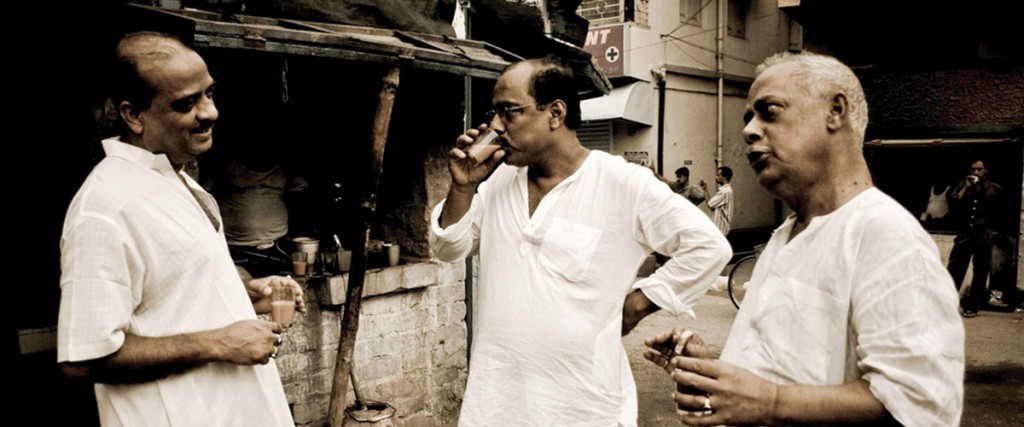I once walked straight into a phalanx of people queuing up on a bustling pavement in Kolkata, but then, in this city, that in itself is not news.
Bengalis, otherwise a querulous lot prone to question why they are expected to do a certain thing – or do anything at all for that matter – quite eagerly fall in line when it comes to queues.
They queue up for everything including autorickshaws, which in Kolkata serve as buses and ply on fixed routes.
So when I say that running into a queue in Kolkata is not news, trust me, it is not news.
Tea Queue
But this particular one, a queuer told me when I asked – clearly taken aback by my ignorance – was to buy tea from their favourite shop. Not packaged and branded tea, but ones that they could blend themselves.
The shop was stacked with plywood chests on three walls, one atop the other and almost kissing the ceiling, containing various varieties of loose teas – Darjeeling, Dooars and Assam – and in all possible forms: black, orthodox, fannings, dust…
There were little steel drums on the front counter, each sporting the legend “Cha” or “tea”, written in red with a striking a black border, in both Bengali and English.
“Give me little bit of this and some of that, and then mix those two with a lot of this one here, and please make sure you don’t confuse the amounts,” I could imagine them saying.
“I don’t want some of this and little bit of that…that would be disaster…it wouldn’t go with lemon in that case.”
Can you guess the amount of time that must have gone into experimenting to arrive at the perfect blend?
To see whether it was a “little bit of this and some of that” which went well with the family’s collective taste bud and lemon, or if it was “some of this and little bit of that” which clicked?
Only an obsession with tea could lead to something like that.

Mathematics and Tea
At the same time, it was also a sublime amalgamation of mathematics and amateur tea blending.
And on the subject of sublimity, be also prepared for a blend of mathematics and brewing while in Kolkata.
For instance, if you are having a cup at some pavement stall, do not be perplexed in case you hear someone mention the “two-foot tea” or a “three-foot tea”.
“Foot” in colloquial Bengali also refers to “boiling”; “two-foot tea” would mean that the same leaves have been brewed two times. You can gauge the number of “foots” from the extent of grimace on the drinker’s face.
Another term you ought to be familiar with when in Kolkata is “two-into-three”, or numerical variables thereof. This is a bit of economics that should not be too hard to figure out: it refers to splitting two cups of tea into three, or as per demand.
This ensures (a) that cash constraints do not come between friends and tea, and (b) that limited funds flow is stretched to cover many of cups over a longer period.
I have seen a tea stall owner actually use a plastic funnel – the kind you would find in school labs or at gas stations to pour gasoline into a jerry can – to fill a plastic bottle with tea.
Executives at some nearby office were too embarrassed to come down to the shop and ask for tea under the “two-into-three” formula, so had sent the office tea boy with the plastic bottle.
Adda and Tea
The two-into-three formula is hugely popular during an “adda” session – a Bengal’s favourite pastime, involving two or more people meeting to chat over anything and everything.
Great personalities in the past partook in tea and adda; celebrated film director Satyajit Ray, for instance, held regular sessions. Mere mortals do it even now; me, for instance.
I once knew some elderly gentlemen occupying derelict concrete slabs by the road for their addas. Their locality had no park, hence the roadside. Of course, tea from a nearby stall was de rigueur.

Bengalis have also exported the practice, as you can imagine. Bhaskar Chakraborty, a school alumnus and a current resident of Khartoum, is a practitioner of this Bengali way of life in far-off Sudan.
“I guess Bengalis are synonymous with tea addas wherever they are,” he tells me. “We have a Bengali group (in Khartoum), and we meet on Thursdays after dinner on the Blue Nile… we talk about everything under the moon sipping Kenyan tea.”
When the group meets at somebody’s home, the snacks often include muri or puffed rice – a favourite with the Bengali.
This is something that the director of Byomkesh Bakshy, a Bollywood film based on a fictional Bengali sleuth of the same name, did not realise. He had the good detective eat French fries with tea.
A horrified columnist, a Bengali needless to say, was moved to write a piece expressing her incredulity over the goof-up.
I bet the same question was asked at countless addas across the city: how could the filmmaker have a Bengali eat fried potatoes with tea?
I, for one, did.
The featured photograph is by Ayan Khasnabis

